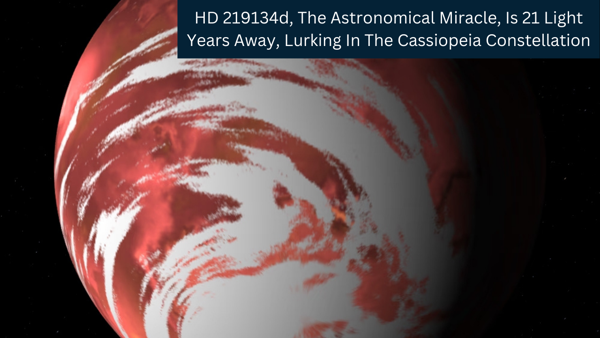
Science & Space
Exoplanet Alert: Hot Neptune, The Astronomical Miracle, Is 21 Light Years Away, Lurking In The Cassiopeia Constellation
Humans are constantly searching the universe for exoplanets in order to better understand the nature of the universe and the formation of plants.
While searching for answers to the above questions, scientists discovered a Hot Neptune 21 light years away from our solar system in the constellation Cassiopeia on 30th July 2015 for the first time.
The planet is part of s solar system that is orbiting a K-Type star, also referred to as an orange dwarf, HD 219134, also known as HR 8832d. The solar system is made up of six exoplanets, including the hot Neptune, HD 219134d.
The surface temperature of a K-type star or Orange dwarf is low in comparison to the Sun. The surface temperature of HD 219134 is approximately 4835.0K, which is 0.84 times or 84% of the sun. Although its temperature is much higher, HD 219134 has a 79% radius, 80% mass, and 28% luminosity of the Sun.
The exoplanet HD 219134b is possibly made of iron or another heavy metal, which explains why its mass is 16.17 times that of the Earth despite having a radius that is only 1.61 times that of the Earth. The planet's orbital radius is 0.237AU, or 22030526 miles or 35454695 km, implying that hot Neptune is much closer to its sun and, as a result, the exoplanet completes one revolution around its host star in only 46.9 days. Because of its close proximity to the host star, its surface temperature rises to an unbearable 410.5K, 137.4°C, or 279.2°F.
When the exoplanet orbits the star, it maintains an eccentricity of only 0.14, which is almost zero, indicating that its orbit is nearly circular. The approximate density measured by scientists is only 21.4 g/cm3.
This star was discovered using the Radial velocity method by the Italian Telescopio Nazionale Galileo's instrument HARPS-N. Spitzer Space Telescope detected the other two exoplanets, HD 219134 b and HD 219134c, but this one was an exception.
scientists are now seeking help from NASA's Transiting Exoplanet Survey Satellite to measure the parameters of the exoplanet in detail by using the primary transit method. When scientists will be using that method the parameters that were taken previously will be rectified swiftly because TESS will give more accurate measures due to its presence in space.
Due to some uncertainty, scientists are still unsure what this planet is made of and why it weighs so much. Hopefully, we will receive a definitive answer soon.


0 Comments